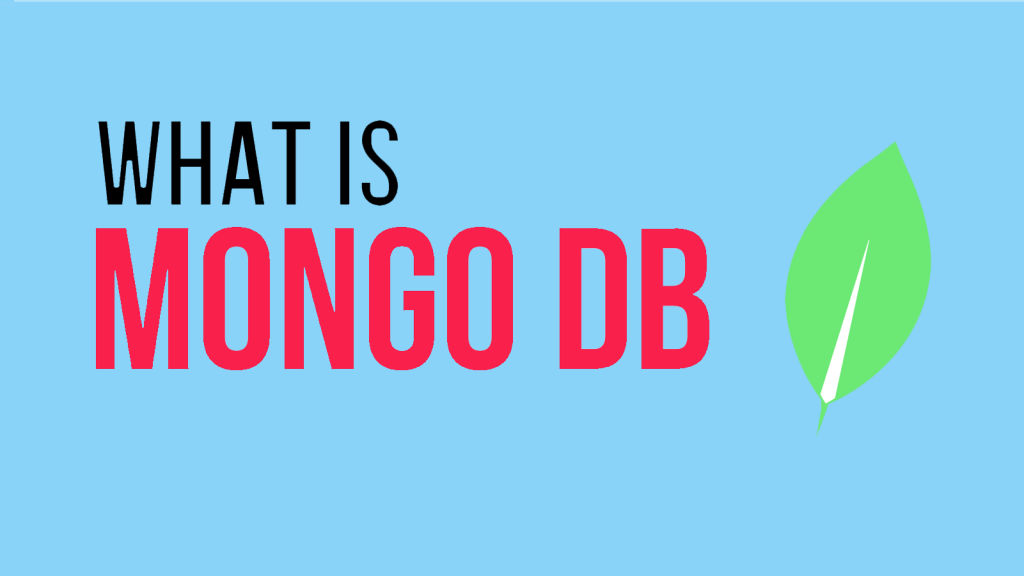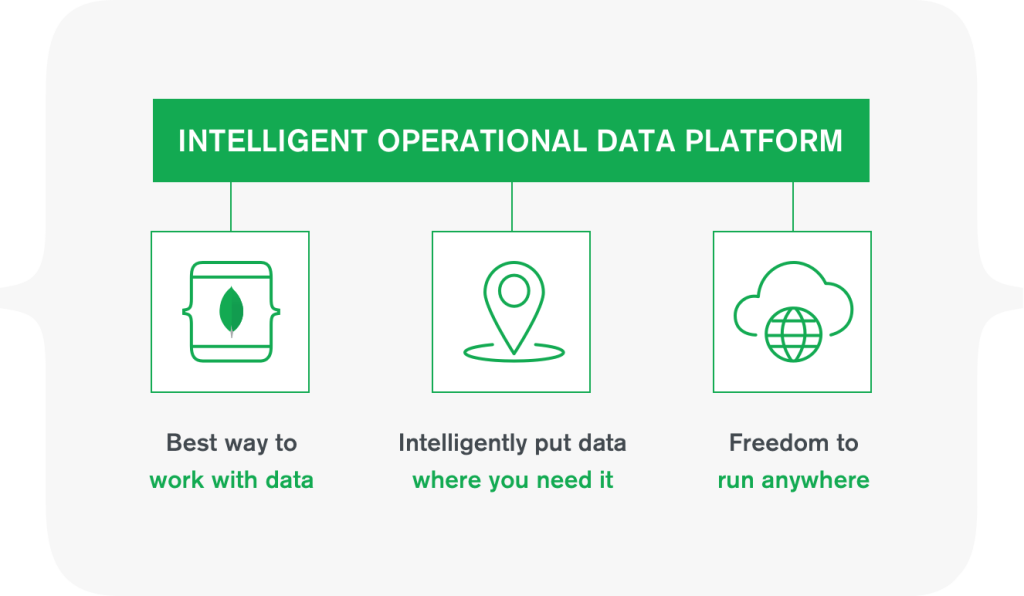Fundamental Tutorials of MongoDB
What is MongoDB?

MongoDB is a document-oriented database management system (DBMS) that uses JSON-like documents with dynamic schemas. This makes it a good choice for storing and querying data that is not well-suited to traditional relational databases, such as semi-structured and unstructured data. MongoDB is open-source and has a large community of users and developers. It is also scalable and can be used to store large amounts of data.
Here are some of the key features of MongoDB:
- Document-oriented: MongoDB stores data in documents, which are JSON-like objects. This makes it easy to store and query data that is not well-suited to traditional relational databases.
- Dynamic schemas: MongoDB documents do not have a fixed schema. This means that you can add new fields to documents without having to change the schema of the database.
- Scalable: MongoDB is a scalable database that can be used to store large amounts of data. It can be scaled horizontally by adding more servers, or vertically by adding more memory and CPU to a single server.
- Open-source: MongoDB is an open-source database, which means that it is free to use and modify. It also has a large community of users and developers who can provide support and help with development.
What is top use cases of MongoDB?
MongoDB is a document-oriented database that is often used for web applications, big data, and real-time applications. Here are some of the top use cases of MongoDB:
- Web applications: MongoDB can be used to store data for web applications, such as user profiles, blog posts, and product catalogs. MongoDB’s flexible schema makes it easy to store and query data that is not well-suited to traditional relational databases. For example, you can store user profiles with a variety of fields, such as name, email address, and interests. You can also store blog posts with a variety of fields, such as title, author, and content.
- Big data: MongoDB can be used to store and analyze large amounts of data, such as social media data, financial data, and sensor data. MongoDB’s scalability makes it a good choice for storing large amounts of data. For example, you can use MongoDB to store social media data from millions of users. You can also use MongoDB to store financial data from thousands of transactions.
- Real-time applications: MongoDB can be used to store and query data in real time, such as for stock trading applications and gaming applications. MongoDB’s document-oriented nature makes it easy to store and query data in real time. For example, you can use MongoDB to store stock prices in real time. You can also use MongoDB to store player data in real time for gaming applications.
What are feature of MongoDB?
MongoDB is a document-oriented database management system (DBMS) that uses JSON-like documents with dynamic schemas. This makes it a good choice for storing and querying data that is not well-suited to traditional relational databases, such as semi-structured and unstructured data.
MongoDB has a number of features that make it a powerful and versatile database:
- Document-oriented: MongoDB stores data in documents, which are JSON-like objects. This makes it easy to store and query data that is not well-suited to traditional relational databases.
- Dynamic schemas: MongoDB documents do not have a fixed schema. This means that you can add new fields to documents without having to change the schema of the database.
- Scalable: MongoDB is a scalable database that can be used to store large amounts of data. It can be scaled horizontally by adding more servers, or vertically by adding more memory and CPU to a single server.
- Open-source: MongoDB is an open-source database, which means that it is free to use and modify. It also has a large community of users and developers who can provide support and help with development.
- Flexible: MongoDB is a flexible database that can be used for a variety of applications. It is not limited to web applications, big data, and real-time applications.
- Easy to use: MongoDB is a relatively easy database to use. It has a simple API that makes it easy to query and manipulate data.
- Secure: MongoDB is a secure database that supports encryption and authentication.
What are feature of MongoDB?
MongoDB is a document-oriented database management system (DBMS) that uses JSON-like documents with dynamic schemas. This makes it a good choice for storing and querying data that is not well-suited to traditional relational databases, such as semi-structured and unstructured data.
MongoDB has a number of features that make it a powerful and versatile database:
- Document-oriented: MongoDB stores data in documents, which are JSON-like objects. This makes it easy to store and query data that is not well-suited to traditional relational databases.
- Dynamic schemas: MongoDB documents do not have a fixed schema. This means that you can add new fields to documents without having to change the schema of the database.
- Scalable: MongoDB is a scalable database that can be used to store large amounts of data. It can be scaled horizontally by adding more servers, or vertically by adding more memory and CPU to a single server.
- Open-source: MongoDB is an open-source database, which means that it is free to use and modify. It also has a large community of users and developers who can provide support and help with development.
- Flexible: MongoDB is a flexible database that can be used for a variety of applications. It is not limited to web applications, big data, and real-time applications.
- Easy to use: MongoDB is a relatively easy database to use. It has a simple API that makes it easy to query and manipulate data.
- Secure: MongoDB is a secure database that supports encryption and authentication.
What is the workflow of MongoDB?
The workflow of MongoDB is as follows:
- Create a MongoDB database. A MongoDB database is a collection of documents.
- Create a collection in the database. A collection is a group of documents that share the same schema.
- Insert documents into the collection. Documents are the basic unit of data in MongoDB.
- Query the documents in the collection. You can query documents in MongoDB using the MongoDB query language.
- Update the documents in the collection. You can update documents in MongoDB using the MongoDB update language.
- Delete documents from the collection. You can delete documents from MongoDB using the MongoDB delete language.
How MongoDB Works & Architecture?

MongoDB is a document-oriented database management system (DBMS) that uses JSON-like documents with dynamic schemas. This makes it a good choice for storing and querying data that is not well-suited to traditional relational databases, such as semi-structured and unstructured data. MongoDB works by storing data in collections of documents. Each document is a JSON-like object that can contain a variety of fields. The fields in a document can be of different types, such as strings, numbers, and arrays.
MongoDB uses a distributed architecture to store data. This means that data is stored on multiple servers, which makes it scalable and fault-tolerant. MongoDB also uses replication to ensure that data is always available. MongoDB’s document-oriented architecture makes it easy to store and query data that is not well-suited to traditional relational databases. For example, you can store user profiles with a variety of fields, such as name, email address, and interests. You can also store blog posts with a variety of fields, such as title, author, and content.
MongoDB’s distributed architecture makes it scalable and fault-tolerant. This means that MongoDB can be used to store large amounts of data and it can continue to operate even if some of the servers go down. MongoDB’s replication feature ensures that data is always available. This means that you can be sure that your data is safe even if there is a problem with one of the servers.
MongoDB is a good choice for a variety of applications, including:
- Web applications: MongoDB can be used to store data for web applications, such as user profiles, blog posts, and product catalogs.
- Big data: MongoDB can be used to store and analyze large amounts of data, such as social media data, financial data, and sensor data.
- Real-time applications: MongoDB can be used to store and query data in real-time, such as for stock trading applications and gaming applications.
How to Install and Configure MongoDB?
To install and configure MongoDB, you can follow these steps:
- Download the MongoDB installer from the MongoDB website.
- Install the MongoDB installer on your computer.
- Start the MongoDB server.
- Create a MongoDB database.
- Create a MongoDB collection.
- Insert documents into the collection.
- Query the documents in the collection.
- Update the documents in the collection.
- Delete documents from the collection.